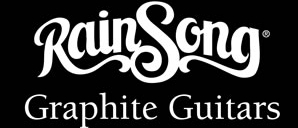
Promenade Music is the UK distributor for RainSong Graphite Guitars, so well done, you've just found RainSong's largest UK dealer.
Promenade Music are proud to be the exclusive UK distributor for the World's first all-graphite acoustic guitar. RainSong guitars are impervious to changes in heat and temperature that can cause traditional guitars to go out of tune, or even crack. As there is no need for traditonal bracing, the sound projects further and the materials and techniques used mean that the guitar is stronger and louder than wooden guitars. We offer the full RainSong Range including the unique Black Ice Series, ever popular Classic Series (the World's first all-graphite acoustic and the original RainSong), Studio Series (with their tough, non-glossy finish and scaled back appointments), Concert Series (like the classic series but with the deeper N2 Neck), Shorty Series (RainSong's smallest and most refined body shape), Parlor Series (available in 12 or 14 fret models and various colours) and Hybrid Series … Call Promenade Music on 01524 410202 for more information and the best UK deal on RainSong.
We've written lots of information for you about RainSong graphite guitars and hopefully you'll find it a one stop shop of information and the most concise information page on the web. Below is info on the model range, UK prices (call us on 01524 410202 for the best UK deal on RainSong), specifications and lots of construction info etc. Hope you find it useful.
RainSong guitars are made purely from graphite, meaning they're light, have an excellent and constant tone and are impervious to room temperature changes because unlike wood and metal, graphite does not expand and contract in different room changes, so you can get your guitar out of the case and play straight away!
RainSong Graphite Guitars was formed in the 1990's by Dr. John Decker on Maui, Hawaii. He introduced an all-graphite guitar that was impervious to climate conditions. The company grew steadily and in 2001 they moved to Woodinville, Washington USA where its designers and craftspeople build a range of high-end graphite instruments that defy the conventions of traditional lutherie and take full advantage of graphite's unique capabilities.
So What's The Big Deal About RainSong Guitars?
RainSongs are all graphite acoustic guitars: body, neck and soundboard are all made out of pure graphite.
Graphite Construction And Projection Tuned Layering (TM) Mean Great Sound.
Projection Tuned Layering was developed by RainSong to ensure that all RainSongs have the crystal detail, warmth and volume of the classic carbon sound. In conventional guitars, acoustic volume is limited by the weight of bracing. Also, bracing provides only local, non-uniform stiffness, resulting in varying amounts of undesirable overtones and some deadening of tone and detail. RainSong's graphite construction and Projection Tuned Layering remove the need for bracing by providing uniform stiffness across the soundboard.
No Bracing
RainSongs are made entirely without braces for greater acoustic volume and clean, detailed tone.
Pure Carbon Tone
Pure carbon is an utterly unique sound. It is clear, rich and resonant, similar to a piano, with a treble that rings with crystalline clarity and a bass that is warm without being muddy. And, because of Projection Tuned Layering's uniform stiffness, the RainSong acoustic sound is impeccably balanced and very, VERY loud. Once you have heard the classic carbon sound you'll recognize it anywhere, as distinctive as anything on earth.
Impervious To Humidity And Temperature Changes
The inherent strength of graphite means a guitar that can survive travel and changes in the environment, while the stability of graphite means a guitar that will stay in tune, evidenced by the fact that all RainSongs are shipped from the factory tuned to concert pitch. The graphite soundboard will not belly, sink, or crack and the graphite neck will not warp with changes in climate. Light in weight, with a proportioned balance that makes it comfortable to cradle or stand with, RainSong is the ultimate combination of workhorse and racehorse for the professional musician.
Performance Shape-CastT Necks
The neck is unique in design, with a feel that is at once comfortable and different, RainSong necks are thin and easy to play. Performance Shape Casting, a process invented by RainSong, allows necks and fretboards to be cast simultaneously as a single graphite matrix. Tolerances can be maintained with RainSong necks that are unheard of with more conventional neck shaping methods. In the Classic Series, Performance Shape Casting allows fretslots to be cast in place for flawless intonation with no dead spots. Additionally, necks are pre-engineered for optimal relief. As a result, heavy steel truss rods are not required and action can be set low for fast, buzz-free playing. The neck of the Advanced Series represents a pioneering achievement in its own right. It is the first all-composite neck/fingerboard combination to include an integral double-action truss rod. The composite fingerboard is precision CNC-machined. The strength of carbon fiber, the adjustable truss rod, the precision-shaped fingerboard and the new low-profile shape combine to provide a super-fast neck with a consistent low action and no dead spots. Finally, extreme strength and stiffness and tight tolerances of Performance Shape Casting mean that RainSong necks will never twist, warp, bow or need any adjustment whatsoever.
High-Tech Bonding Materials
RainSong uses the same technology in bonding its bridges and necks that is used in making planes, rockets and satellite equipment. Stronger than the bonds of any wood glue or off-the-shelf epoxy, the RainSong high-tech materials and techniques combine for a smoother passage of energy from string to soundboard, for greater detail, a broader dynamic range and cleaner tone.
Beautiful Apperance
RainSong believes that graphite is not something to cover up. That's why Classic Series RainSongs are finished clear, to expose all the shimmering three-dimensional beauty and distinction of graphite's weave. RainSong has developed the best possible finish for protection and appearance without dampening sound. Layer after layer of clear UV protective finish is applied, sanded and buffed until only the thinnest mirrored surface remains. A carefully book-matched back of graphite weave, perfectly inlayed custom shark fret-markers and logo give RainSong a striking and refined look. Top-of-the-line hardware balances the composition in cool chrome. The Advanced Series sports a bold new look with rich colors, complemented by accents of the shimmering graphite-weave look.
Great Plugged In Sound
Electronics are not an afterthought at RainSong; they are an integral and important part of the RainSong experience. Because graphite is a natural enhancer of electrical energy, the graphite construction of RainSong works wonders with pickups. Plug a RainSong in and the world stands on its head; all the subtle richness of the classic carbon sound is amplified into a unique bloom of harmonics and tone.
Expert fret job and set up
All fret jobs and set ups are done individually by expert luthiers at RainSong's Woodinville factory. The frets are top quality nickel alloy for low wear and great looks. And, because RainSong necks are so stable, action can be exceptionally low for easy and comfortable playing.
Limited Lifetime Warranty
RainSong warrants its guitars to be free from defects in materials and workmanship for the ownership life of the original purchaser, subject to limitations contained in the warranty."
Call us on 01524 410202 for the best UK deal on Rain Song
Technical Talk And Opinions Of Dr. John A. Decker, Jr.
What Makes a RainSong Have Its Unique Sound?
A graphite guitar – specifically, a guitar with a graphite soundboard – has a unique "sound", as does a guitar with a spruce soundboard, or a cedar soundboard, or a soundboard made out of an old garbage can.
Excursus #1:
. 99% of the sound of a guitar comes from the soundboard – the top.
. To prove this point, the "Stradivarius of the guitar", Antonio de Torres (active 1830-1870), once made a guitar with a wood top and a paper mache body – which still exists in a museum in Paris.
. In blind tests people thought it was all wood!
The internal structure of any soundboard colors the tone, primarily by influencing which overtones are missing and to what degree. Graphite, however, is different from wood, in its "acoustic damping" – vibrational energy which turns into heat instead of audible sound. Since damping is what gives a guitar its tonal character, a graphite guitar has a fundamentally different sound quality.
Damping in wood
Wood is very "lossy" – is heavily damping – in the sonic frequency range. Most woods used in guitars convert only about 50% of vibrational energy into sound. The rest goes into internal vibrations in the molecules of the complex organic chemicals that make up a piece of wood – that is, the other 50% becomes heat. That energy goes into raising – slightly – the temperature of the wood, not into sound. More specifically, most woods show slowly-increasing damping with vibrational frequency. There is a "knee" in the vicinity of 1000 Hz – which varies with the wood species – at which 50% of the vibration is absorbed by the wood. Above this frequency, the damping increases rapidly, at around 20db per octave. This is why the highest notes on a wooden guitar sound "muddy". You hear the "attack" – the percussive initial sound of the note being struck – but almost no "note", because the vibrations have been damped – been transformed into heat in the wood – so much that they're almost inaudible before your brain has time to hear them.
Non-linear mode interaction
It's more complicated than this, however. Most of our ability to tell a wooden guitar from a graphite guitar comes, as "hi-fi" fans know, from our brain's processing the band of sonic frequencies from roughly 2000 Hz to 12,000 Hz. The presence or absence of these very high overtones, as well as the presence or absence of "mix tones" – sum-and-difference frequencies from the nonlinear mixing of lower frequencies – give an instrument its acoustic character. They are what make a wooden guitar sound "wooden", a trash-can lid sound "tinny", and a RainSong sound clear, bright and pure.
Rigorous quantitative physics gets difficult at this point. The sort of acoustics taught in college Physics 101 assumed no losses – no damping – resulting in a nice regular series of higher harmonics, decaying exponentially with frequency, and producing no mix frequencies. Each frequency is independent of all the others, and they do not interact with each other. It is only in non-linear systems – that is in materials with sufficient damping that different non-harmonic frequencies interact with each other – that "missing" overtones, "enhanced" overtones and "mix tones" can occur.
Alas, in non-linear systems simple calculations don't work – the calculations more nearly work in a "2 + 2 = 8 or sometimes = 0" manner! Actually, one has to use the sort of non-linear wave-wave quantum calculus used to compute the energy levels in atoms. And since there are hundreds of frequencies, all interacting non-linearly, it takes a supercomputer to even approximately model an acoustic guitar! Currently, the state-of-the-art in guitar acoustics is to be able to model only the lower few modes, none of which are involved in "sound character".
On the other hand, one can attempt to measure accurately the sound waves of a guitar, looking for the frequency content and mode structure, in an anechoic chamber – a chamber with no echos nor sound-coloring reflections . However, discrete frequencies can be observed only for the lowest modes – below, say, 350 Hz. Above this, the frequency plot looks like "white noise" and one is unable to measure specific vibrational modes. The frequencies which the brain uses to determine sound character fall in the middle of this white noise and cannot be identified at all.
Excursus #2:
. There have been a number of experiments where people were asked to tell a Stradivarius violin, say, from a junk student fiddle or a Ramirez classical guitar from a junk guitar when they were played behind a curtain.
. Even "naive" subjects – people off-the-street – can almost always differentiate the quality instrument from the junk one.
. However, if one tries to identify them by their frequency spectrum or mode structure, even musical-instrument acoustic physicists who have spent their entire careers working in this field can't tell which is which.
Comparison
Now, let's apply this to the sound difference between wooden guitars and graphite guitars. Wood absorption is non-linear throughout the audible spectrum, and therefore exhibits a very complex structure of missing, enhanced and mixed overtones. It turns out, however, that "graphite" (a composite material of carbon fibers in a resin matrix, usually epoxy) has almost no damping – no losses – at these frequencies. This means that a guitar soundboard made of graphite behaves in a nearly linear manner, displaying almost the regular overtone pattern of college physics. Thus a RainSong's damping is almost constant across the acoustic spectrum, rather than increasing rapidly at high frequencies. Since the higher frequencies aren't damped as heavily as in a wooden guitar, the trebles are louder. High overtones are only slightly damped, and therefore display very little non-linear interaction. The overtone sequence is pure, with few mix tones or missing harmonics.
Projection Tuned LayeringT
RainSong Graphite Guitars has quite recently developed a radical new technology for manufacturing its acoustic guitars, Projection Tuned LayeringT. It is a proprietary process uniquely suited to RainSong's all-graphite construction, and patents covering it are pending. Until they issue I can't discuss the technique, but I can describe the basic acoustic physics of what we were trying to do and why we have succeeded. Basically, we wanted to increase the acoustic volume of our guitars. Since guitar soundboards, like airplane wings and speaker cones, should ideally have zero weight and infinite stiffness, we reduced the weight of the soundboard while increasing its overall stiffness and response. We also did away with traditional soundboard bracing, which adds considerable weight and provides only localized stiffness. PTL provides uniform soundboard stiffness, enhancing the sound throughout. I can affirm that the result is a warmer, richer bass which nicely balances RainSong's signature bell-like treble, and that the instrument as a whole is dramatically louder. Players accustomed to wooden-guitar acoustics are surprised by the light weight, delicacy and projection of the new RainSongs. Wooden soundboards simply cannot be made as light and stiff as PTL soundboards.
The new technology also allows for considerable improvements in production efficiency and quality control. Because of the unique nature of Projection Tuned Layering as a process, we can produce guitars faster and with a more consistent quality. That means we can drop the price while improving quality – a rare achievement!
This is a long answer to a short question. Physics is like that, I'm afraid, if one really wants to understand something.
There are, however, some short answers. As compared to wood guitars:
RainSongs with Projection Tuned LayeringT are louder.
RainSongs are lighter.
RainSongs have much clearer trebles.
RainSongs have better balance, primarily because we don't have to compensate for weak trebles.
RainSongs have a purer tone, with more natural harmonics and less mixing.
Whether all this is "better" or not is ultimately a matter of personal taste – sort of like "Are the pure colors of a rainbow better than the blended colors of a painter's palette?" It does allow the musician a combination of projection, latitude and a breadth of expression that is simply not available with wooden guitars.
And judging from the reaction of owners of RainSong guitars, it is downright addictive.
Call us on 01524 410202 for the best UK deal on RainSong
Caring For Your RainSong Guitar
Caring for your RainSong is an easy and enjoyable part of ownership. By following a few simple rules of thumb, you can avoid some common pitfalls and help maintain your RainSong's beautiful appearance for years to come. First, keep in mind that a RainSong is designed to extract the wonderful and unique tonal qualities of pure graphite – not to withstand extremes in climate or rough handling. A RainSong has been carefully layered, finished and polished for the best possible sound. So, although the materials and construction techniques ensure an instrument that is considerably more stable and stronger than conventional acoustics.
Changing Strings
When changing strings, change one string at a time. This will prevent the piezoelectric transducer (located under the saddle) from repositioning, which will affect the sound balance from string to string.
Action
A RainSong has been setup to a factory standard action. The action may be altered by changing the saddle height.
Truss Rod Adjustment
All-Graphite (Classic Series & Advanced Series) RainSong necks, made entirely out of composite materials, should not warp or bow over time. Classic Series necks do not have truss rods. A double action truss rod has been designed into the Advanced Series neck to allow changes to the neck relief. Adjustments may be made using a 5 mm wrench. Turn the truss rod nut clockwise to increase relief (bow) and anti-clockwise to decrease relief (bow).
Refretting
Your RainSong has been setup using jumbo nickel alloy frets that have been pressed into fret-slots on the fingerboard. A qualified guitar technician should be able to refret your RainSong just like any wooden guitar.
Humidification
All-graphite Series RainSongs (Classic Series & Advanced Series) are impervious to humidity and temperature changes.
Finish
It is best to clean your RainSong after every use since your hands contain oils that can damage finish and frets. To clean your RainSong use a high grade, non-abrasive automotive detailing product such as Meguiar's Mirror Glaze Final Inspection 34 or Quik Detailer (www.meguiars.com), and a soft all-cotton cloth. Remember to inspect the rag to make sure nothing abrasive is on it.
Don't forget, if you've any RainSong questions, just give us a call on 01524 410202.
Check our current stock at https://www.promenademusic.co.uk/rainsong

